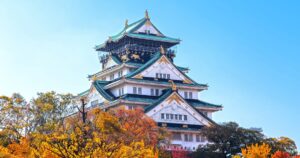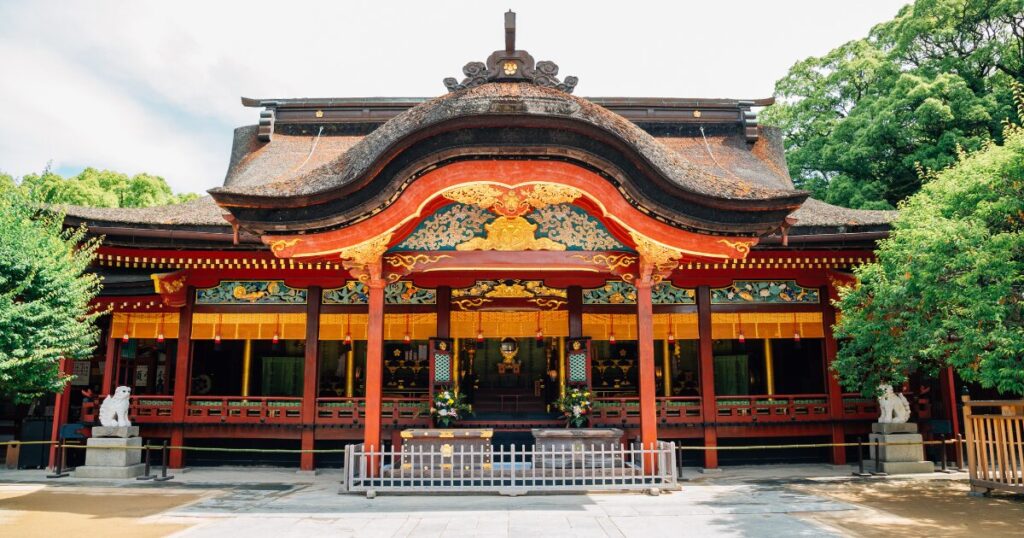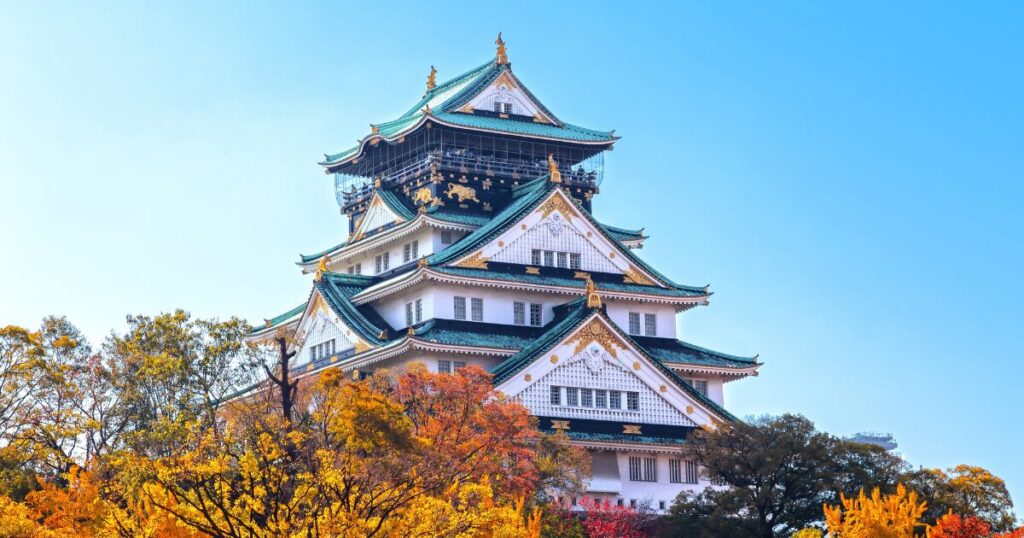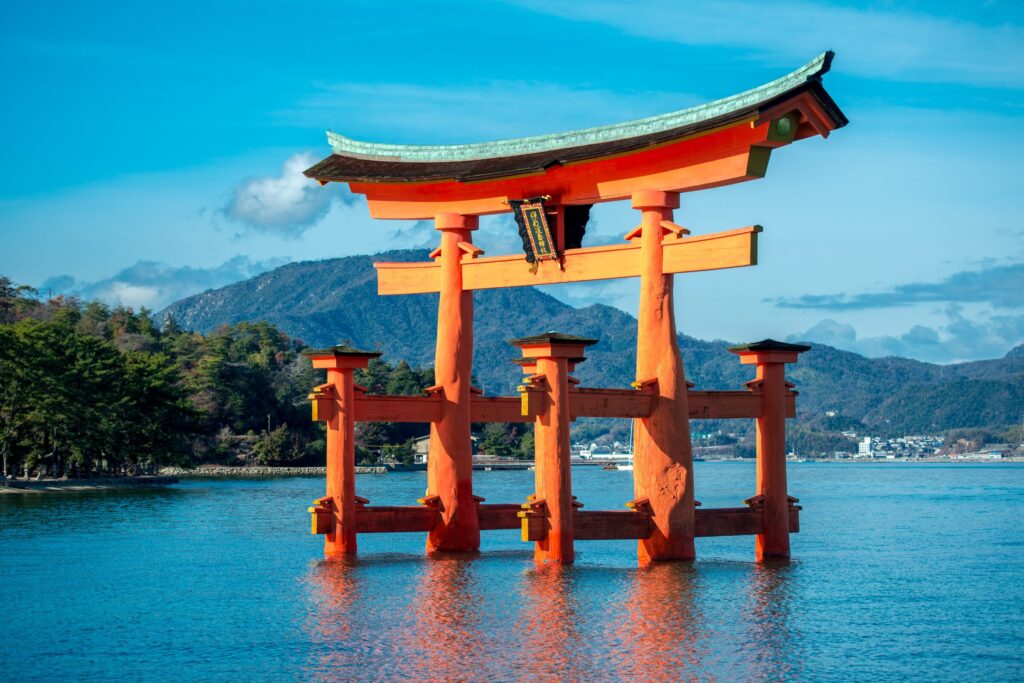The Kanto region is often thought of as a hub of modernity and innovation, especially with Tokyo, one of the world’s most popular tourist destinations, at its center. At first glance, it may not seem like a place for “hidden gems.”
However, Tokyo represents only a small part of what Kanto has to offer. Beyond the city’s bustling streets, Kanto is home to beautiful, tranquil spots that showcase Japan’s natural and cultural wonders.
Whether you’re planning to visit Tokyo or are looking for something beyond the typical tourist paths, consider venturing a bit farther to explore these unique sites. This guide will introduce you to Kanto’s lesser-known treasures, where tradition, nature, and history blend seamlessly into an unforgettable travel experience.
- Tokyo (東京都)
- Kanagawa Prefecture (神奈川県)
- Saitama Prefecture (埼玉県)
- Chiba Prefecture (千葉県)
- Gunma Prefecture (群馬県)
- Tochigi Prefecture (栃木県)
- Ibaraki Prefecture (茨城県)
- Discover Kanto Region
Tokyo (東京都)
Tokyo, Japan’s vibrant capital, combines the ultramodern and the traditional in a dynamic mix of innovation, culture, and history. From towering skyscrapers to serene temples, Tokyo offers a bustling metropolis experience with countless unique neighborhoods. Visitors are drawn to the dynamic energy of Shibuya and Shinjuku, the fashion-forward vibe of Harajuku, and the historical ambiance of Asakusa. Foodies will find a paradise of flavors, from ramen and sushi to seasonal sweets. Tokyo is also home to world-renowned art galleries, shopping centers, and cutting-edge technology, making it a top destination for tourists seeking a comprehensive Japanese urban experience.
Shibuya Crossing (渋谷スクランブル交差点)

Shibuya Crossing is arguably Tokyo’s most iconic spot. This busy intersection sees thousands of pedestrians cross in all directions, creating a “scramble” that’s mesmerizing to watch and exhilarating to experience. Flanked by neon lights, giant screens, and the famed Shibuya 109 shopping center, it’s a must-see spot for visitors looking to soak in the energy of Tokyo.
- Address: Shibuya City, Tokyo
Sensō-ji Temple (浅草寺)

Tokyo’s oldest temple, Sensō-ji, is a cultural gem in the Asakusa district. Known for its iconic red gate and massive paper lantern, the temple attracts millions of visitors yearly. Surrounding streets are lined with stalls selling traditional souvenirs, sweets, and snacks. It’s a place to experience both Tokyo’s history and its timeless charm.
- Website: https://www.senso-ji.jp/english/
- Address: 2 Chome-3-1 Asakusa, Taito City, Tokyo 111-0032
Kanagawa Prefecture (神奈川県)
Kanagawa Prefecture, bordering Tokyo, is known for its mix of scenic coastlines, historic sites, and cosmopolitan cities. The vibrant port city of Yokohama offers an impressive skyline, waterfront parks, and Japan’s largest Chinatown. Meanwhile, Kamakura presents a treasure trove of traditional temples and shrines, surrounded by lush nature and beaches, making it a perfect retreat. Enoshima Island and Hakone are also popular spots, with hot springs, museums, and Mount Fuji views. Kanagawa balances urban excitement with tranquil natural escapes, making it an ideal destination for diverse travelers.
Great Buddha of Kamakura (鎌倉大仏)

This iconic bronze Buddha statue stands at 13 meters tall and dates back to the 13th century. Nestled in Kamakura’s Kotoku-in Temple, it’s a serene spot where visitors can learn about Japanese Buddhism and enjoy Kamakura’s peaceful atmosphere. The surrounding area has scenic hiking trails and quaint streets filled with traditional shops.
- Website: https://www.kotoku-in.jp/en/
- Address: 4-2-28, Hase, Kamakura, Kanagawa Prefecture 248-0016
- Business Hours: [April–September] 8:00 – 17:30 / [October-March] 8:00 – 17:00
Yokohama Chinatown (横浜中華街)

The largest Chinatown in Japan, Yokohama’s Chinatown, offers vibrant street scenes filled with red lanterns, authentic Chinese restaurants, and souvenir shops. Visitors can sample street food, browse unique stores, and visit colorful temples, making it a dynamic cultural experience within Kanagawa.
- Website: https://www.chinatown.or.jp/#
- Address: Yamashitacho, Naka Ward, Yokohama, Kanagawa 231-0023
Saitama Prefecture (埼玉県)
Saitama Prefecture, just north of Tokyo, is known for its historic towns, beautiful nature, and impressive architectural structures. Kawagoe, a well-preserved Edo-period town, offers a glimpse into Japan’s past with its “Little Edo” streets lined with traditional warehouses and shops. Saitama also boasts green spaces like Chichibu, famous for its seasonal flower parks and hiking trails, and ancient shrines that have long histories and hold great spiritual significance.
Kawagoe Warehouse District (川越蔵造りの町並み)

Kawagoe’s Warehouse District transports visitors back to Japan’s Edo period. The clay-walled kurazukuri warehouses that line the streets create an authentic, old-world feel. Here, visitors can explore traditional shops, enjoy local sweets, and visit historical landmarks, making it a prime destination for history buffs and shoppers alike.
- Website: https://kawagoe-ichibangai.com
- Address: Saiwaicho, Kawagoe, Saitama 350-0063
Hitsujiyama Park (羊山公園)

Located in Chichibu, Hitsujiyama Park is famous for its stunning moss phlox (shibazakura) in spring, creating a colorful carpet across the park. The nearby mountains provide a scenic backdrop, making it a must-see for nature lovers and photographers during the blooming season.
- Website: https://www.chichibuji.gr.jp/spot/spot-syousai10/
- Address: 6360 Omiya, Chichibu, Saitama 368-0023
Chiba Prefecture (千葉県)
Chiba Prefecture, east of Tokyo, is renowned for its coastal beauty, scenic landscapes, and family-friendly attractions. It’s home to Narita International Airport, making it a gateway to Japan. Chiba is famous for the vast Tokyo Disneyland and DisneySea, which attract visitors from around the globe. Coastal areas like the Boso Peninsula offer sandy beaches, rugged cliffs, and fresh seafood. Chiba also boasts ancient temples and peaceful parks, such as the sprawling Naritasan Shinshoji Temple, offering visitors a chance to unwind and explore history outside Tokyo’s busy streets.
Naritasan Shinshoji Temple (成田山新勝寺)
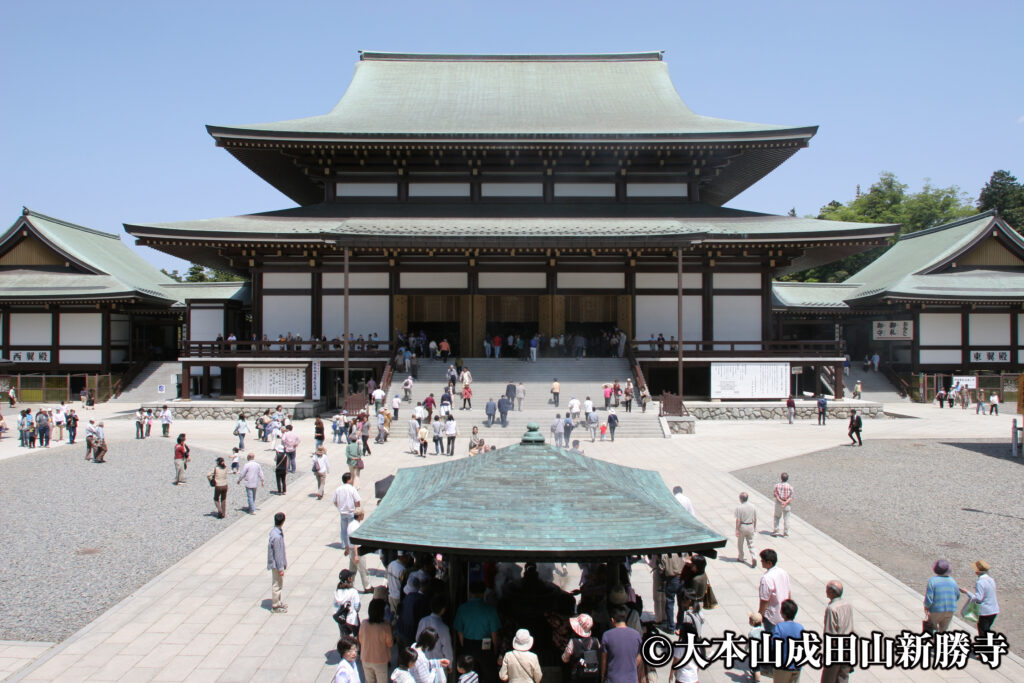
One of Chiba’s most historically significant temples, Naritasan Shinshoji Temple was founded in 940 AD. Known for its grand architecture and peaceful surroundings, it’s a popular pilgrimage site. The temple complex includes multiple buildings, pagodas, and a beautiful garden. Visitors can also enjoy Omotesando, the street leading to the temple, lined with traditional shops and eateries.
- Website: https://www.naritasan.or.jp/english/
- Address: 1 Narita, Chiba 286-0023
- Business Hours: 8:00 – 16:00
Tokyo Disneyland (東京ディズニーランド)
As Japan’s most visited theme park, Tokyo Disneyland in Urayasu, Chiba, offers magical experiences for families and thrill-seekers alike. With iconic rides, character parades, and themed restaurants, it’s a major attraction for both locals and international tourists. The nearby DisneySea park provides a unique water-based theme, ideal for all ages.
- Website: https://www.tokyodisneyresort.jp/en/index.html
- Address: 1-1 Maihama, Urayasu, Chiba 279-0031
Gunma Prefecture (群馬県)
Gunma Prefecture is a haven for hot spring lovers and nature enthusiasts. Surrounded by mountains, it’s known for its abundant onsen (hot springs), such as the famous Kusatsu Onsen, which is among Japan’s best. Gunma’s outdoor offerings include scenic hiking trails, ski resorts, and national parks. For those interested in history, Gunma also has cultural sites, like Tomioka Silk Mill, a UNESCO World Heritage site that showcases Japan’s industrial past. Gunma’s unique landscapes and traditional experiences make it a relaxing yet intriguing destination.
Kusatsu Onsen (草津温泉)

Kusatsu Onsen is known for its rejuvenating, mineral-rich hot springs, believed to have healing properties. The Yubatake (hot water field) is the town’s symbol, with its steaming waters flowing through wooden channels. Visitors can enjoy public baths, foot baths, and ryokan inns, making it an unforgettable hot spring experience.
- Website: https://www.kusatsu-onsen.ne.jp/portal/
- Address: Agatsuma District, Gunma 377-1711
Tomioka Silk Mill (富岡製糸場)

As a UNESCO World Heritage site, Tomioka Silk Mill offers insight into Japan’s Meiji-era industrialization. This historic silk factory played a crucial role in the country’s textile industry, and visitors can explore the well-preserved facilities, which include the factory, warehouses, and workers’ dormitories.
- Website: https://www.tomioka-silk.jp
- Address: 1-1 Tomioka, Gunma 370-2316
- Business Hours: 9:00 – 16:30
Tochigi Prefecture (栃木県)
Tochigi Prefecture is known for its rich history, impressive temples, and scenic mountain landscapes. The city of Nikko is a UNESCO World Heritage site, famous for its ornate Toshogu Shrine, a mausoleum for Tokugawa Ieyasu, the founder of the Tokugawa shogunate. Tochigi also has natural hot springs and vibrant autumn colors, making it a year-round destination. With its historic architecture, charming hot spring towns, and stunning waterfalls, Tochigi combines culture and nature seamlessly.
Nikko Toshogu Shrine (日光東照宮)

This lavishly decorated shrine, dedicated to Tokugawa Ieyasu, is a masterpiece of Edo-period craftsmanship. It’s adorned with intricate carvings, gold leaf, and vibrant colors, reflecting Japan’s feudal heritage. The shrine complex also includes iconic structures like the Yomeimon Gate and the famous “see no evil, speak no evil, hear no evil” monkey carvings.
- Website: https://www.toshogu.jp
- Address: 2301 Sannai, Nikko, Tochigi 321-1431
- Business Hours: 9:00 – 17:00
Kegon Falls (華厳の滝)

One of Japan’s most beautiful waterfalls, Kegon Falls is located near Lake Chuzenji in Nikko. With a 97-meter drop, the falls offer spectacular views, especially in autumn when the surrounding forest is ablaze with fall colors. An elevator takes visitors to an observation deck at the base for a closer look.
- Website: https://www.kegon.jp
- Address: 2479-2 Chugushi
- Business Hours: [March–November] 8:00 – 17:00 / [December-February] 9:00 – 16:30
Ibaraki Prefecture (茨城県)
Ibaraki Prefecture, just northeast of Tokyo, is known for its scenic parks, gardens, and coastal sights. The most famous is Hitachi Seaside Park, renowned for its seasonal flower displays that attract photographers from around the world. Ibaraki’s rugged coastline and temples, such as the stunning Oarai Isosaki Shrine, offer peaceful experiences for travelers. The prefecture is also known for its agricultural products, including sweet potatoes and melons, and is home to the culturally significant Kairakuen Garden.
Hitachi Seaside Park (ひたち海浜公園)
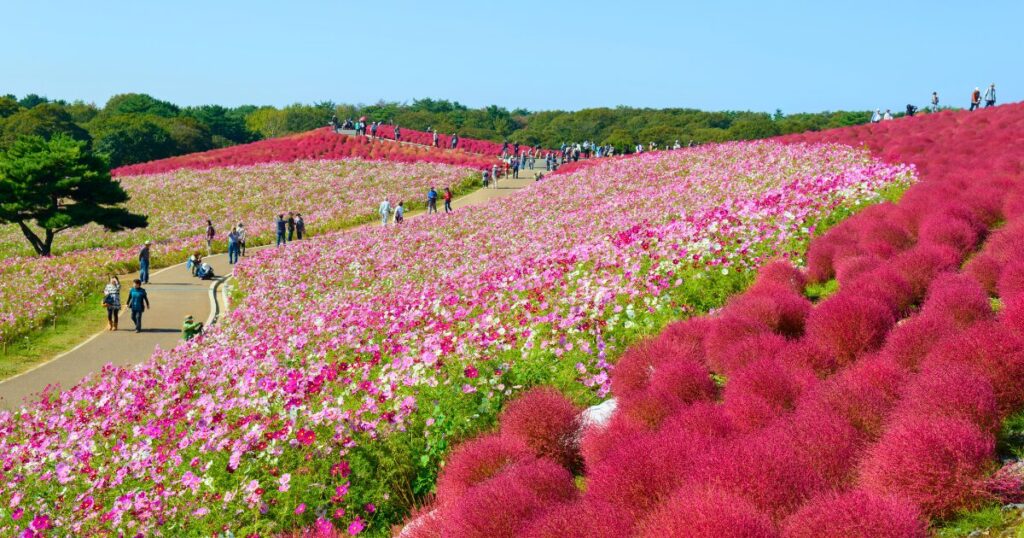
Hitachi Seaside Park is a vast garden famous for its seasonal flowers. In spring, millions of Nemophila (baby blue eyes) cover the hills in a carpet of blue, while the fall season brings vivid red kochia bushes. The park’s size and color-changing landscapes make it a popular spot for nature lovers.
- Website: https://hitachikaihin.jp/en/
- Address: 605-4, Aza-Onuma, Mawatari, Hitachinaka, Ibaraki, 312-0012
- Business Hours: [March 1 – July 20] 9:30 – 17:00 / [July 21 – August 31] 9:30 – 18:00 / [September 1 – October 31] 9:30 – 17:00 / [November 1 – February 28] 9:30 – 16:30
Oarai Isosaki Shrine (大洗磯前神社)

Perched on the rugged coast, Oarai Isosaki Shrine is known for its torii gate, which stands on rocks by the ocean, creating a picturesque setting, especially at sunrise. The shrine itself dates back over 1,000 years, and the coastal views and serene atmosphere make it a peaceful retreat.
This completes the Kanto region’s introduction and highlights. Each section introduces readers to the cultural richness, historical significance, and natural beauty found within each prefecture, making Kanto a diverse and fascinating destination in Japan.
- Website: https://www.oarai-isosakijinja.net
- Address: 6890 Isohamacho, Oarai, Higashiibaraki District, Ibaraki 311-1301
- Business Hours: 6:00 – 17:00
Discover Kanto Region
The Kanto region’s appeal extends far beyond Tokyo’s bustling streets, inviting travelers to experience Japan’s culture, nature, and traditions up close. From the mystical mountains of Nikko to the coastal beauty of Chiba and the soothing hot springs of Gunma, each Kanto destination offers a unique blend of history and modernity.
Whether you seek outdoor adventure, spiritual journeys, or simply want to explore Japan’s stunning landscapes, Kanto has something for everyone. Journey through these distinctive prefectures, and you’ll find that Kanto is a region where Japan’s past and future harmoniously meet.











